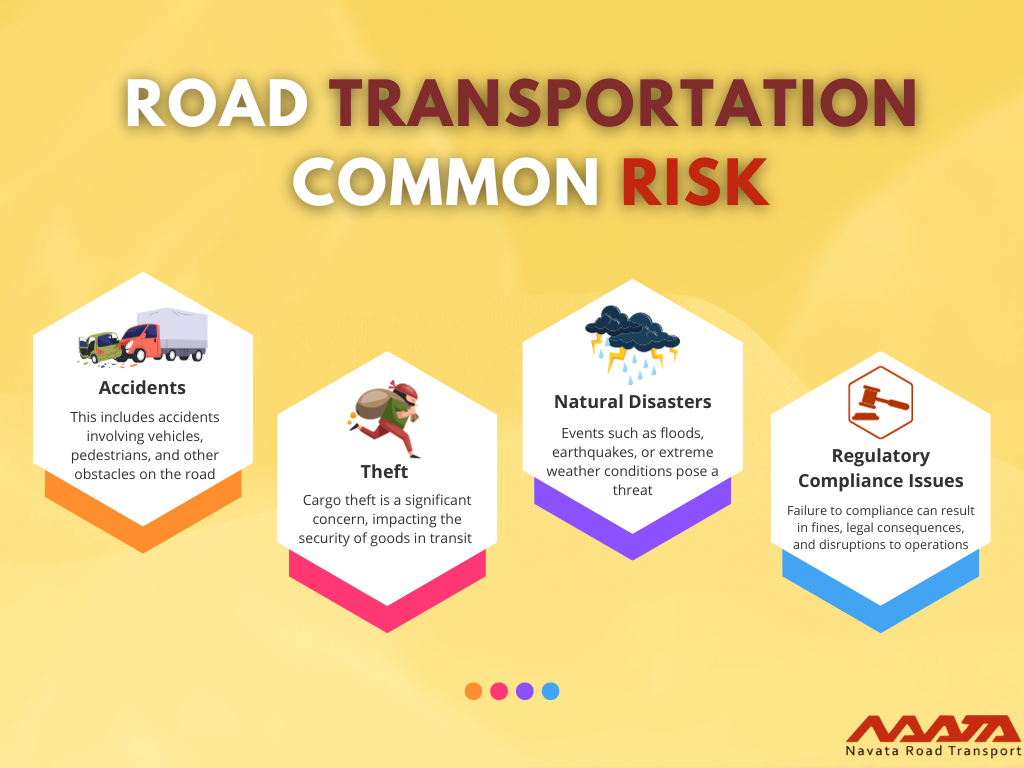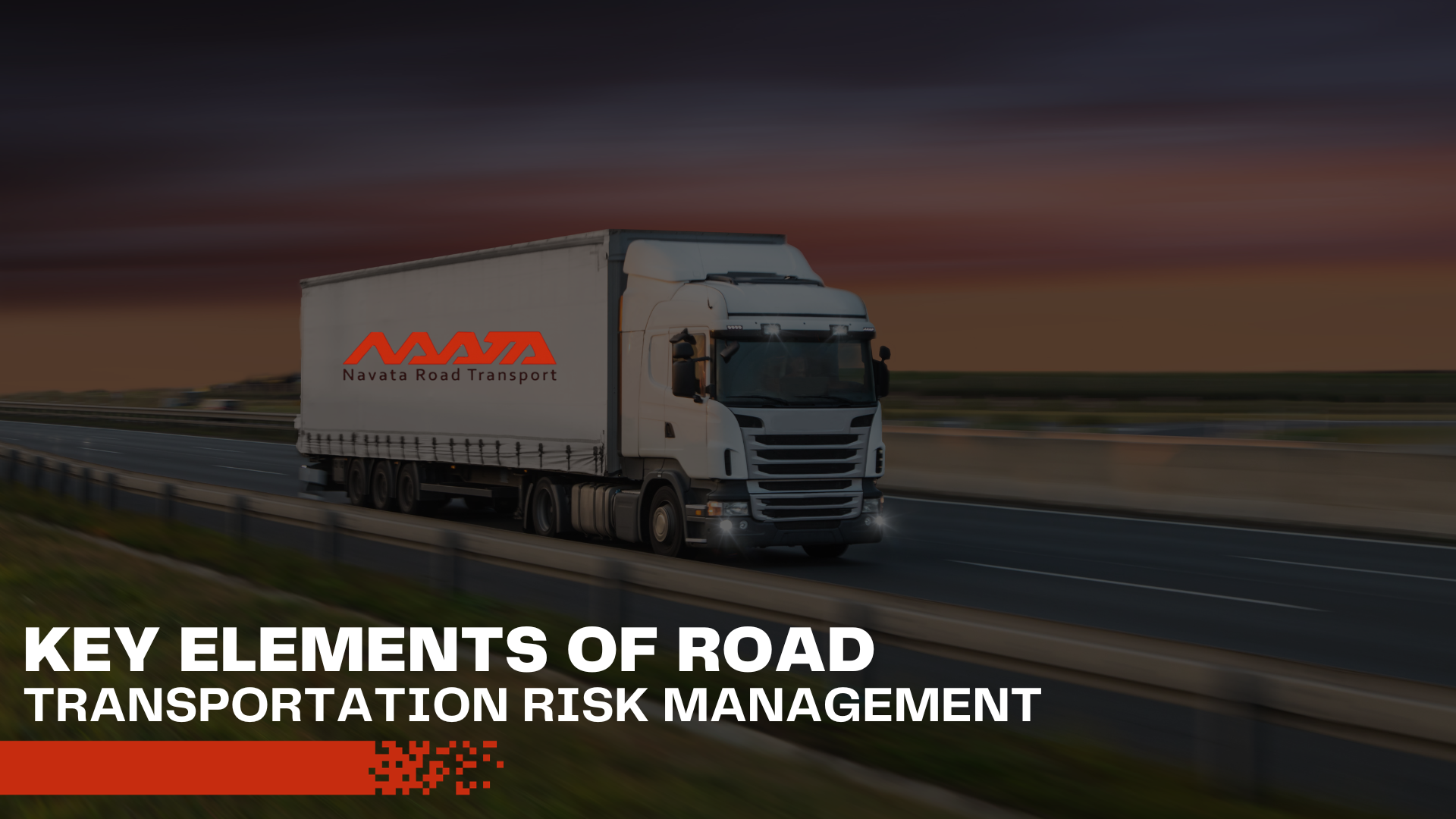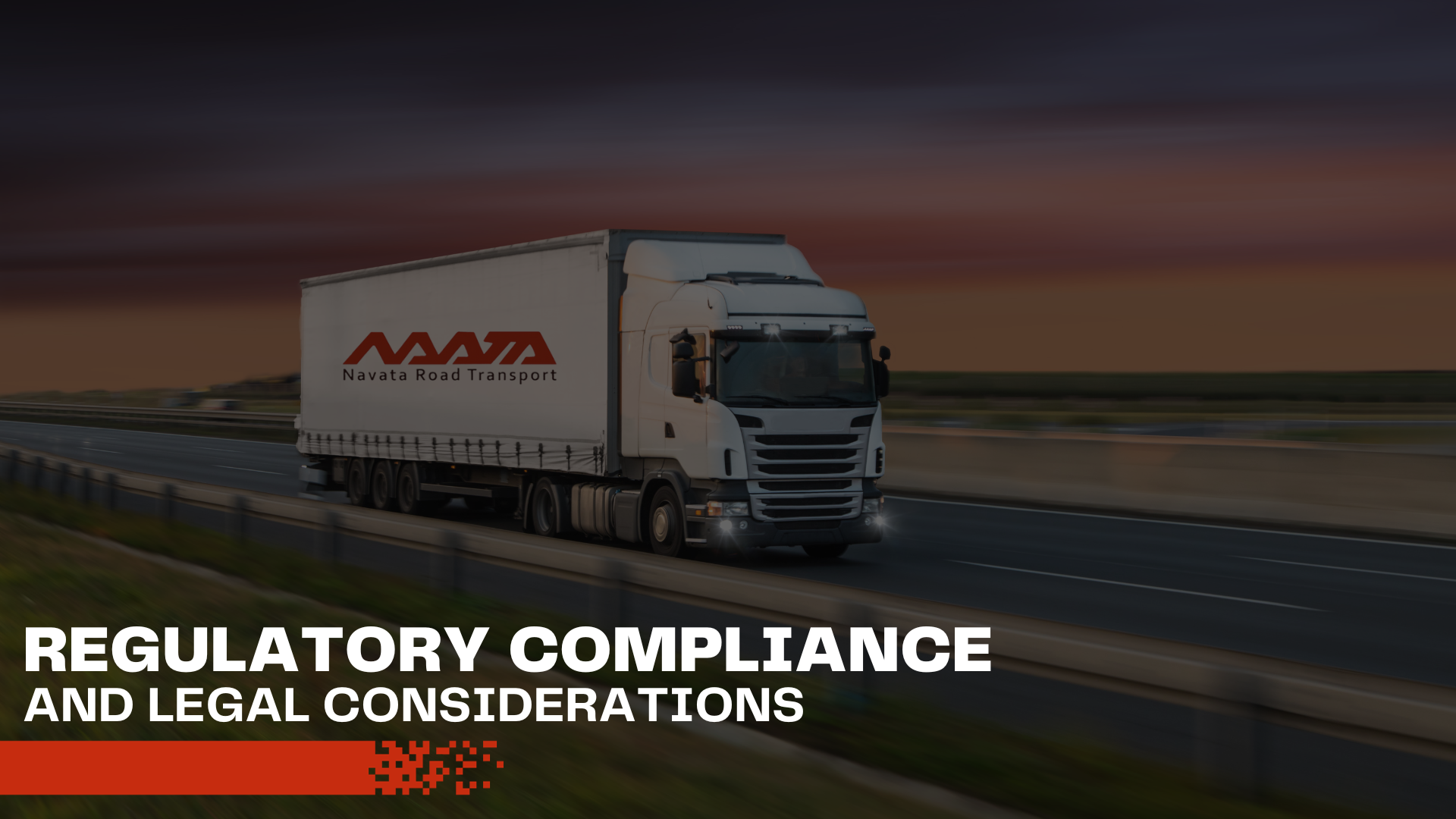Guide to Road Transportation Risk Management
Table of Contents
Guide to Road Transportation Risk Management
Road transportation is the backbone of global commerce, facilitating the movement of goods and people across vast distances. However, with this essential function comes inherent risks that require meticulous management. In this detailed blog, we will delve into the intricacies of road transportation risk management, exploring the challenges faced by the industry and the strategies employed to mitigate potential hazards.
Overview of Road Transportation Risks
Identifying Common Risks
Accidents
Road accidents are a prevalent risk in transportation, ranging from minor incidents to major collisions. This includes accidents involving vehicles, pedestrians, and other obstacles on the road.
Theft
Cargo theft is a significant concern, impacting the security of goods in transit. This can occur during stops, rest periods, or even through orchestrated criminal activities.
Natural Disasters
Events such as floods, earthquakes, or extreme weather conditions pose a threat to the safe and timely transportation of goods. These unpredictable occurrences can disrupt supply chains and routes.
Regulatory Compliance Issues
Meeting and adhering to the various regulations and standards set by authorities is a continual challenge. Failure to comply can result in fines, legal consequences, and disruptions to operations.

Analyzing the Impact
On Supply Chains
The risks mentioned above can have a cascading effect on supply chains. Accidents or theft can lead to delays, affecting the overall flow of goods from manufacturers to consumers.
On Delivery Schedules
Any disruption in the transportation process directly impacts delivery schedules. Timeliness is crucial in the logistics industry, and risks can lead to missed deadlines, dissatisfied customers, and financial losses.
On Overall Operational Efficiency
Cumulatively, these risks challenge the efficiency of the entire transportation system. Operational disruptions, delays, and financial losses contribute to a decrease in overall effectiveness.
Economic Implications
This subsection focuses on the broader economic consequences of road transportation risks, examining how these risks reverberate through various sectors.
Examining Economic Consequences
On Businesses: The financial implications for businesses can be substantial. Damage to goods, delays, and increased operational costs due to risk management efforts impact the bottom line.
On Insurers: Insurance companies that underwrite transportation policies are directly affected. Claims stemming from accidents or theft require insurers to assess and manage risks effectively to maintain profitability.
On Governments: Governments are impacted by the need for increased regulatory oversight and emergency response in the aftermath of accidents or natural disasters.
Discussing the Ripple Effect
On Industries Relying on Timely Transportation: Industries that heavily depend on the timely and secure transportation of goods, such as retail, manufacturing, and healthcare, experience a ripple effect. Delays in the supply chain can lead to stock shortages, production slowdowns, and compromised patient care in the case of healthcare logistics.
You Might Also Like To Read: Supply Chain Risk Management And Its Relevance In Today’s Volatile Environment

Key Elements of Road Transportation Risk Management
Risk Assessment and Identification
Conducting Thorough Risk Assessments
Conducting a comprehensive risk assessment is the foundation of effective risk management in road transportation. This involves systematically evaluating all potential hazards that could impact the transportation process.
Risks can vary widely, including accidents, theft, natural disasters, route-specific challenges, and regulatory compliance issues. By thoroughly examining these factors, companies can create a risk profile that forms the basis for developing mitigation strategies.
Utilizing Data Analytics and Technology
Leveraging data analytics and technology is crucial for modern risk management. By collecting and analyzing relevant data, companies can gain valuable insights into patterns, trends, and potential risks.
Advanced analytics can help predict potential issues before they occur, enabling proactive measures. Technology, such as GPS tracking, route optimization software, and real-time monitoring systems, plays a pivotal role in preventing risks and enhancing overall operational efficiency.
Safety Protocols and Training
Exploring Best Practices for Driver Training Programs
Human factors contribute significantly to road transportation risks. Implementing robust driver training programs is essential for ensuring that drivers are well-equipped to handle various situations on the road. Training should cover defensive driving techniques, emergency response protocols, and adherence to safety regulations. Continuous education and skill development are critical components of reducing the likelihood of accidents and improving overall driver safety.
Highlighting the Role of Safety Protocols, Technology, and Driver Monitoring Systems
Safety protocols are the guidelines and procedures put in place to minimize risks during transportation operations. This includes protocols for loading and unloading, vehicle inspection routines, and emergency response plans. Integrating technology, such as collision avoidance systems and driver monitoring systems, adds an extra layer of safety. These technologies can detect driver fatigue, monitor adherence to safety protocols, and provide real-time feedback to drivers, reducing the probability of accidents.
Technological Innovations in Risk Management
Discussing the Impact of IoT, Telematics, and AI
The integration of IoT, telematics, and AI has revolutionized risk management in road transportation. IoT devices, such as sensors on vehicles and cargo, provide real-time data on conditions like temperature, humidity, and security status. Telematics systems offer insights into driver behavior, vehicle performance, and route efficiency. Artificial Intelligence analyzes vast amounts of data to identify patterns, predict potential risks, and recommend optimized routes, contributing to overall risk mitigation.
Showcasing Real-world Examples of Technology Implementation
Real-world examples illustrate how technology is actively employed to manage risks. For instance, IoT-enabled cargo tracking systems can provide real-time visibility into the location and condition of goods, reducing the risk of theft or damage. Telematics systems can monitor driver behavior, offering insights into speeding, harsh braking, and other risky activities.
AI algorithms can predict maintenance needs, minimizing the risk of breakdowns. By showcasing these examples, companies can learn from successful implementations and understand the tangible benefits of adopting these technologies.

Regulatory Compliance and Legal Considerations
Navigating Regulatory Challenges
Road transportation is subject to a myriad of regulations, and compliance with these rules is critical for the smooth operation of businesses in the industry. Navigating regulatory challenges involves:
Examining the Complex Web of Regulations
Road transportation is governed by a complex set of regulations at local, national, and international levels. This includes rules related to vehicle safety, driver qualifications, hours of service, environmental standards, and more.
Businesses need to conduct a thorough analysis of the regulatory landscape to understand and comply with the specific requirements relevant to their operations.
Providing Insights into Compliance
Once the regulatory framework is understood, businesses must develop strategies to stay compliant. This involves creating robust internal processes, training programs, and utilizing technology to monitor and ensure adherence to regulations.
Insights into compliance involve understanding not just the letter of the law but also its spirit, ensuring that the company operates ethically and responsibly.
Legal Implications of Accidents
Accidents are unfortunate but inevitable occurrences in road transportation. Understanding the legal implications is crucial for businesses to protect themselves and handle such situations effectively:
Discussing Legal Ramifications
Accidents can lead to various legal challenges, including determining liability, dealing with insurance claims, and potentially facing legal proceedings. Understanding the legal ramifications helps businesses prepare for these situations.
This section involves a detailed exploration of how different legal aspects come into play in the aftermath of an accident, considering both civil and criminal liabilities.
Offering Guidance on Post-Accident Navigation
Providing guidance on how companies can prepare for and navigate the aftermath of an incident is essential. This includes immediate response protocols, cooperation with law enforcement, and communication strategies.
Additionally, understanding how to handle insurance claims and potential legal actions is crucial for minimizing financial and reputational damage.

Road Transportation Insurance Strategies
Importance of Insurance in Road Transportation
Insurance is a cornerstone of risk management in road transportation. This section highlights the significance of insurance and its role in safeguarding businesses:
Detailing Types of Insurance
Different aspects of road transportation require specific types of insurance coverage. This could include vehicle insurance, cargo insurance, liability insurance, and more.
Detailing these types of insurance helps businesses understand the breadth of coverage available and ensures they are adequately protected against various risks.
Exploring Risk Mitigation through Insurance
Insurance plays a pivotal role in mitigating financial risks associated with accidents, theft, natural disasters, and other unforeseen circumstances. Exploring how insurance acts as a financial safety net provides businesses with a clear understanding of its value.
This involves examining real-world scenarios where insurance coverage proved instrumental in helping businesses recover from unexpected events.
Choosing the Right Insurance Coverage
Providing a Guide on Coverage Selection
Not all businesses have the same risk profile, and therefore, choosing the right insurance coverage is a nuanced process. This guide assists businesses in evaluating their specific needs based on factors such as the nature of the cargo, transportation route, and overall business model.
It includes considerations for assessing risk levels and understanding the optimal balance between coverage and cost.
Highlighting Self-Insurance and Risk Retention Strategies
Self-insurance and risk retention strategies provide alternatives to traditional insurance. This section explores the considerations for businesses contemplating these options, including financial capacity, risk tolerance, and regulatory requirements.
By understanding the pros and cons of self-insurance and risk retention, businesses can make informed decisions about the most suitable risk management approach for their unique circumstances.
Conclusion
In conclusion, effective road transportation risk management is a multifaceted endeavor that requires a holistic approach. By understanding the landscape, implementing advanced technologies, staying compliant with regulations, and leveraging insurance strategies, businesses can navigate the complex terrain of road transportation with confidence.
This comprehensive guide aims to equip industry stakeholders with the knowledge and tools needed to proactively manage risks and ensure the smooth flow of goods and services on our roads.
Thanks For Reading: Guide to Road Transportation Risk Management
Powered By 360Presence




